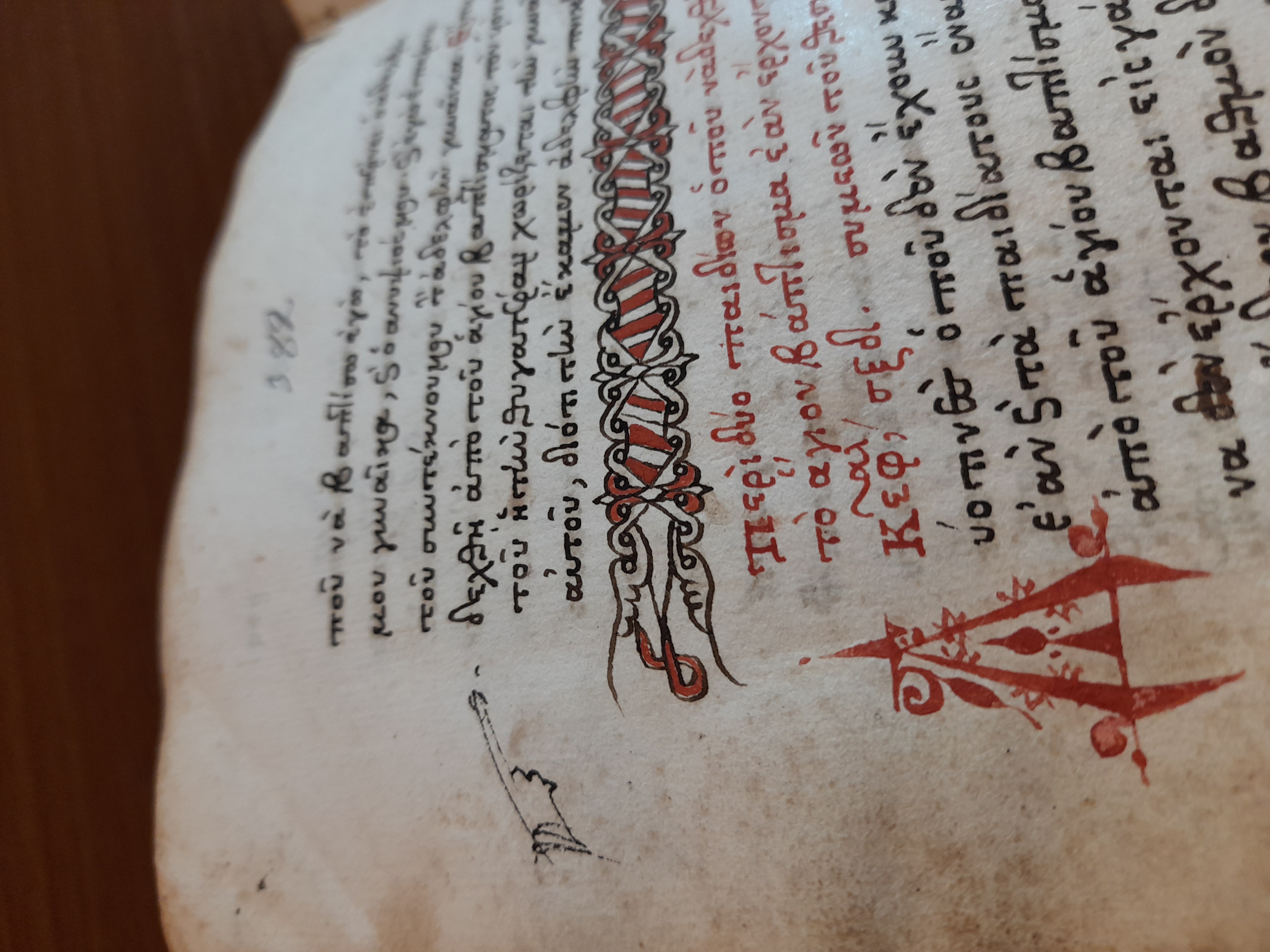A new manuscript of the nomokanon from the collections of the Gennadius Library offers important historical testimony about Kefalonia in 1801.
Professor Curtis Runnels recently donated to the Gennadius Library a manuscript (MSS 891), containing a collection of legal texts dating to the second half of the 17th century or the beginning of the 18th century. The collection is a version of the well-known Nomokanon of Manuel Malaxos that has been added to the interesting group of similar texts held by the Gennadeion.
Malaxos, who had been elected notary of the metropolis of Thebes, prepared this collection to help the bishop of Thebes, and more broadly the Greek Orthodox clergy of the Ottoman Empire, to bring justice to their flock. As the Ottoman administration recognized the right of the Orthodox Patriarch to try family law cases in accordance with Christian law, this became an area of limited freedom in managing the lives of Christian populations without the interference of the Ottoman authorities. Over time, implicitly, the Orthodox clergy’s jurisdiction was extended to other parts of the life of the Christian subjects of the empire. The material on which this law was based, scattered in ecclesiastical canons of synods and laws of Byzantine emperors, interpretations of jurists and decisions of patriarchs, presented difficulties in its use. This the reason why from time to time the collection of such texts was sought for the convenience of the bishops.

In 1561 Malaxos assembled a large part of this material in the original language. In 1562 he 'translated' the texts into the spoken language, and as a consequence his collection became widely disseminated; in fact, the text survives in over 300 manuscripts. However, rather than being simply copied, the text was creatively recreated, so that it is difficult to find more than two identical manuscripts. The differences between manuscripts are often important for understanding the needs of the communities, as well as the mentalities, problems, and aspirations of the ecclesiastical authorities. The manuscript of the Gennadius Library contains a rich version of the text. It consists of 576 chapters and resembles in the selections, order, language, and structure with the text of the manuscript published in 1881 by Zachariӓ von Lingenthal.
The Gennadius manuscript also seems to have been in continuous use from at least the end of the 17th / beginning of the 18th century (as some notes and the cute maniculae on the margins show) until the 19th century. It was related with the island of Kefalonia, where the clerics Zesimos Kantiliotis, Anastasios and Efstathios Razis, the latter being also commissioner of the metropolis, used it at least until the beginning of the 19th century.
Eustathios Razis also recorded an interesting detail on the last folio of the manuscript. This is a remembrance written upside down. In this note, the desperate Kefalonian clergyman, describes the unpleasant feelings caused by the uprising of 1801 on the island, but also his ominous predictions for the future. His language is simple and vivid, witness to how a modern official clergyman considers the facts of the rebellion.